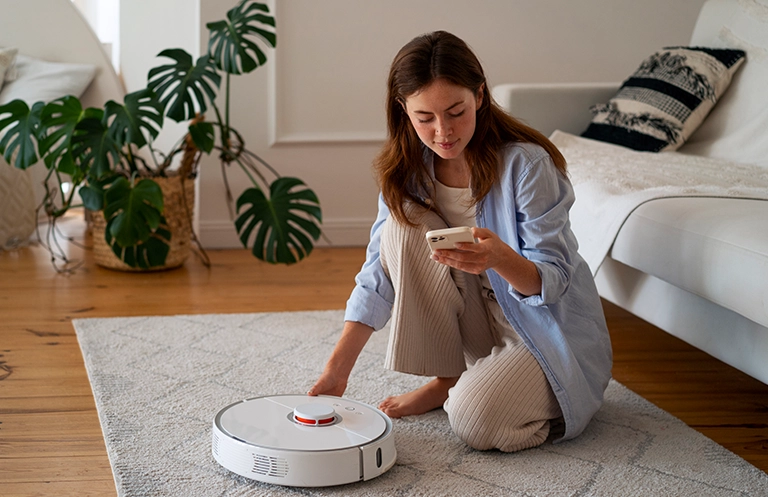The ecosystem of connected medical devices is reliant on the Cloud and web databases for instant data access. Even though this method offers easier and instant access to data, it has its security challenges and one successful cyberattack can severely impact the intentions of the provider and the mental, physical, and financial security of the patient.
Cynerio’s The State of Healthcare IoT Device Security 2022 report indicates that about 53% of online connected devices came with at least one susceptibility while 33% of bedside devices are known to have a critical risk.
Types of cyber threats faced by the healthcare industry
According to Palo Alto Networks Unit42, known security threats affected about 75% of medical infusion pumps. This can put sensitive information and the lives of patients at critical risk.
The researchers found out that over 52% of infusion pumps analyzed are vulnerable to two common susceptibilities that were indicated in 2021. These devices can be hacked for operational information, certain patient data and network or device configuration information. For instance, remote hackers can launch man-in-the-middle to take advantage of the susceptibility of the CVE-2020-12040 to intercept the flow of information between the servers and healthcare infusion pumps.
Also, local hackers having physical access to medical infusion pumps can take advantage of the security susceptibilities of the CVE-2016-8375 and CVE-2016-9355 to gain access to sensitive data.
Crucial IoT Security Features that should be in your Medical Device
Security should be a priority whenever you’re designing a medical device. This shouldn’t be considered an afterthought, but every important security step must be implemented to guarantee the seamless performance of core devices.
Some crucial IoT security features that must be implemented into your potential medical devices are described below
Built-in Encryption and PKI Adoption
Public Key Infrastructure, also known as PKI, is a vital security measure for all connected medical devices. Although this innovation has been around for several years and integrated into most devices available out there. PKI helps to encrypt and authenticate all connected devices.
To improve your data transfer process, hardware-based encryption can also be implemented to provide additional security for software-based encryption that only depends on a specialized processor for authentication.
Fully Secured Network Protocols
It is crucial to integrate network protocols. Every communication needs to be managed by the linked devices to authenticate and validate access. These basic firewalls are not available in older devices except for regular authentication through passwords. Simple configurations are no longer feasible.
Firewalls should be integrated into every IoT device that offers rule-based filtering. Access should be limited to only trusted and known sources. Recent security and FDA guidelines indicate that the devices require their firewalls to be managed remotely. This will enable firewall systems to block dormant protocols and ports while staying ahead of new threats.
Intrusion Monitoring and Detection
Implementing a tracking feature can be extremely helpful in planning to secure medical devices. As previously mentioned, security threats are regularly evolving and overly complex. Hackers and security breaches are constantly developing creative ways to bypass security systems, even with the advancement of technology ensuring that the masses remain safe.
Susceptibilities can be discovered through real-time breach detection and monitoring systems whenever they occur. They help log firewall activities, track internal network traffic, and report any questionable events to the required management system.
Updates and Remote Management
Linked medical devices can remain helpful to healthcare providers and patients for many years. Update capabilities and remote management must be integrated to guarantee the integrity of cybersecurity.
Firmware management enables you to perform updates on security systems that track developing threats in the healthcare sector. Also, management capabilities enable you to integrate new features and track the current condition of the device while staying prepared against hackers.
Recently, we helped one of our clients, who is a well-recognized global pharmaceutical company, with mobile application development and cybersecurity testing. The mobile application was designed for the patients for prescription reminders, usage reports and medicine routines. eInfochips’ team developed a mobile application, conducted vetting, and implemented application security configuration for end users. Considering that the app uses significant patients’ personal data, we did intensive application cybersecurity testing covering threat modeling using the STRIDE technique, vulnerable assessment, and MOBSF tool based SAST (Static application security testing) and DAST (Dynamic application security testing). As a result of all these activities, the application helped the client to enhance patient experience and treatment monitoring for better clinical outcomes.
Conclusion
It’s important to put in place a solid and robust security feature because of the vast number of connected medical devices currently in the healthcare sector. Earlier efforts were on pre-market products to reduce vulnerability risk but with a large fleet of legacy medical devices, the need of post-market regulations has been implemented. We at eInfochips provide healthcare customers with IoT cybersecurity services including threat modelling, vulnerability management and security design implementation to help them manage risk. We have developed connected solutions for remote monitoring, diagnostics, telemedicine, and imaging in the healthcare industry as a “partner of choice” for globally present clients leveraging our domain and process expertise (IEC 60601 – 1/2/6, IEC 62304, 510K, ISO 13485, HIPPA).
Get in touch with our experts to know more about IoT Cybersecurity service offerings for medical devices.













